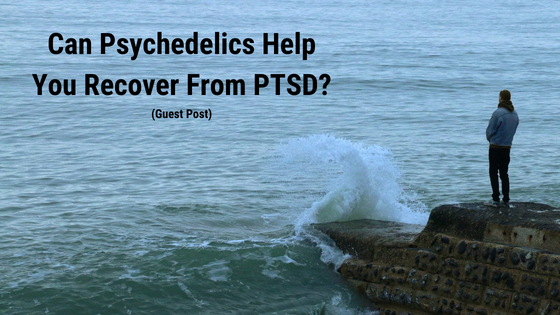Post-traumatic stress disorder (PTSD) is a widely-known mental health issue that develops in response to various traumatic events. The traces of this mental illness can be tracked throughout the entire history of humanity. But the first description of PTSD as we know it now appeared after World War II.
PTSD is a common diagnosis for trauma survivors. Around 350 million people are currently struggling with PTSD worldwide. In Ukraine, the number of victims is growing dramatically every day. Let’s dig deeper into the causes of this mental health condition.
Causes and symptoms of PTSD
PTSD can develop due to a prolonged traumatic experience, as well as any other stressful or frightening event. Here are some examples of causes that can trigger its development:
- Any kind of abuse, harassment, or bullying, including domestic or childhood abuse, racism, sexism, etc.
- Violence and physical assault, including torture, terrorist attacks, etc.
- Accidents, such as plane or car crashes, natural disasters, etc.
- Rape or any other kind of sexual assault.
- Distressing experiences at work, for example, when working in the armed forces or emergency services.
- Death of a loved one, including partners, friends, family, etc.
- War or conflict.
- Traumatic childbirth or loss of a child.
- Serious health issues, for example, being diagnosed with a very dangerous disease.
- Traumatic divorce, including your own divorce or parents’ divorce.
All these things can cause the development of PTSD. However, according to experts, this mental health condition affects only 1 in 3 people after a traumatic event. There is no clear explanation why some people resist PTSD whereas others don’t.
Now, what about the symptoms? The list of possible PTSD symptoms is quite long. Every person can react to a traumatic event differently, and the intensity of the symptoms can vary, too. Nevertheless, all reactions typically fall into four categories – avoidance, intrusive memories, changes in physical and emotional reactions, and negative changes in behavior and thinking. The most common symptoms of PTSD include:
- Depression
- Agitation
- Intrusive thoughts or images
- Vivid flashbacks
- A feeling of severe distress as a reaction to real or symbolic reminders of the traumatic experience
- Insomnia
- Nightmares
- Hypervigilance
- Loss of energy
- Inability to concentrate
- Irritability or aggressive behavior
- Hallucinations
- Physical reactions, such as sweating, pain, trembling, or nausea.
Therapy Types To Alleviate PTSD
After many years of research, it is possible to define four major therapy types that work for PTSD patients:
- Eye movement desensitization and reprocessing (EMDR) therapy. This therapy is rather new. It basically requires moving your eyes in a specific way while you are recalling traumatic memories. The idea is to process the emotions, thoughts, and behaviors your brain links to these memories and, thus, kick-start a natural healing process.
- Behavioral therapy. This term spans a wide range of different treatment techniques. In a nutshell, all behavioral therapies strive to change the way a person behaves through reinforcement, shaping, modeling, and similar techniques.
- Exposure therapy. This therapy is all about combating fears. In essence, this technique exposes you to the source of distress or its context to help you overcome linked physical and mental reactions.
- Narrative exposure therapy. This therapy involves various writing and storytelling exercises. It suggests writing about a traumatic experience in order to let go of it, look at it from a different perspective, and release negative emotions.
These are the four treatment therapies widely used to combat PTSD. It’s important to note that treating such disorders typically requires mixing therapeutic and medical approaches. That is, people with PTSD also have to consume the proper medications.
Does it work? A blend of the right medications and therapies gives some people a complete release of symptoms. However, not all PTSD cases can be treated easily. Even with a wholesome approach, some people don’t feel any relief. But there’s groundbreaking research being done now to find new ways to cure PTSD.
why psychedelic therapy might be more effective for ptsd treatment

Unlike conventional medicine and therapies, psychedelic therapy has shown excellent results, even for patients with severe PTSD. This includes people who have the most intense and complex symptoms, including dissociation, depression, and childhood trauma. Also, such innovative therapies seem to work great even for people with a history of alcohol and substance use disorders.
The Multidisciplinary Association for Psychedelic Studies (MAPS) continues sponsoring the MDMA-assisted therapy trials to obtain the FDA’s approval. Previous studies have shown that:
- 88% of people with severe symptoms experienced a significant reduction in their PTSD scores two months after the treatment.
- 67% of people didn’t meet the criteria for PTSD two months after the treatment.
These numbers indicate the powerful healing effect that psychedelics can have on one’s mental health. According to experts, the consumption of MDMA is linked to:
- lower levels of fear and defensiveness while keeping a clear state of mind;
- higher levels of well-being;
- improved extraversion and sociability;
- higher levels of trust.
On top of that, studies show that psychedelic consumption increases empathy and decreases the involvement of the brain’s region responsible for fear, anxiety, and threat detection. This makes patients more open to therapy and helps make it more effective. As a result, participants of human-subject studies showed significant improvement in their PTSD symptoms with good profiles of side effects and safety.
do you need a therapist, or can you do it alone?
Psychedelic treatment can be incredibly life-changing since it often profoundly affects the worldview. Studies confirm that it can have a positive effect on people suffering from various mental health issues, including PTSD. But does this mean that self-cure can be just as effective?
The short answer is no. Psychedelics can be healing. But they can also be very dangerous.
Self-use of psychedelics is associated with a variety of risks, including dangerous behaviors, when a person experiencing hallucinations can cause harm to themselves or to the people around them. The possibility of a bad trip is also a risk since MDMA causes feelings of confusion, anxiety, and even paranoia. Indeed, bad trips can be terrifying and incredibly stressful. If you experience one on your own, it may significantly worsen your mental condition.
When running psychedelic sessions with a professional, you can make the most out of it. An experienced mental health professional will walk you through this process and help interpret the insights and integrate the experience. As a result, such therapy will work in your favor.
why you should address ptsd treatment with caution
The psychedelic therapy trials show groundbreaking results. Today’s findings show that such substances possess a huge healing potential. At the same time, we must promote caution in this regard.
Between a quarter and a third of patients with PTSD and other disorders don’t respond to conventional treatment. So, there is a massive need for more innovative approaches.
On the one hand, psychedelic therapy might be a part of the solution. But it’s also worth noting that it’s not a “magic pill.” Patients who have gone through such an experience say that it requires lots of hard work. Psychedelic trips can be very challenging. And people with disorders are especially vulnerable to their potential side effects. So, for them, such experiences can be rather destabilizing.
To make such therapy work, we need properly trained and experienced mental health professionals. Also, it’s important to understand that psychedelic treatment might not be right for everyone. For some patients, it can do more harm than good. Thus, it’s crucial to ensure that PTSD treatment is addressed in a comprehensive and rational way. We should all take extra caution in the era of the psychedelic renaissance to avoid repeating past mistakes.
Conclusion
Although different studies confirm the potential benefits of psychedelics for PTSD treatment, the FDA has not approved psychedelic therapy for PTSD patients yet. Although it is likely to happen in the future, the process may take months or even years as the trials are still in progress.
Now, while we’re waiting for the FDA approval, it’s essential to continue following your clinician’s recommendations if you suffer from PTSD. Don’t expect a “magic pill” to solve all your problems. Instead, make use of all the opportunities that modern therapy is offering and remember that PTSD requires an integrative approach to alleviate the condition.
Natalie Maximets is a certified life coach and a contributing writer at OnlineDivorce.com. She helps people survive fundamental life changes and improve interpersonal relationships.


